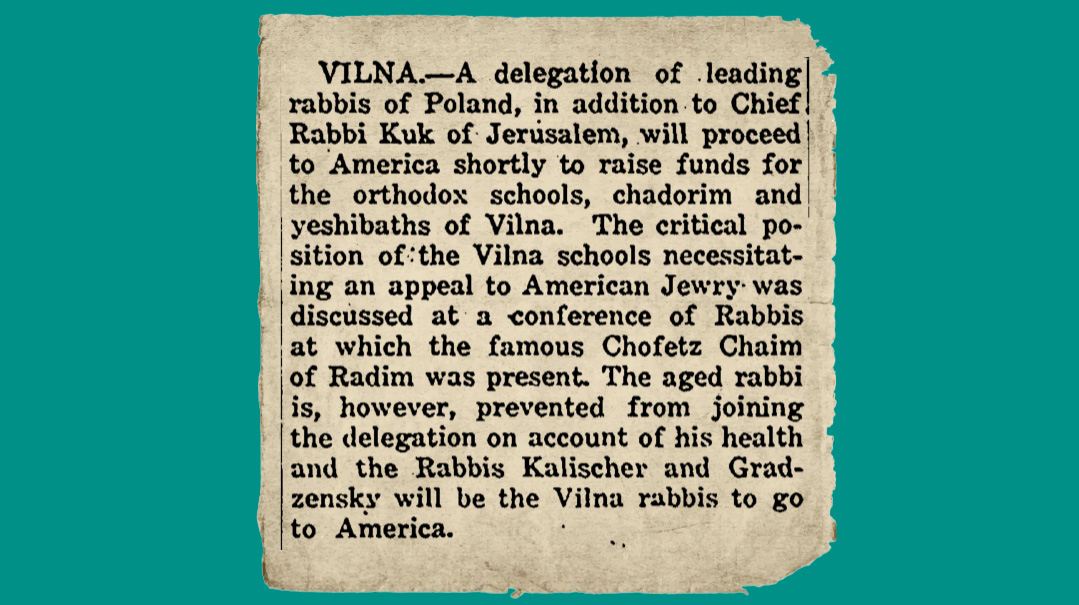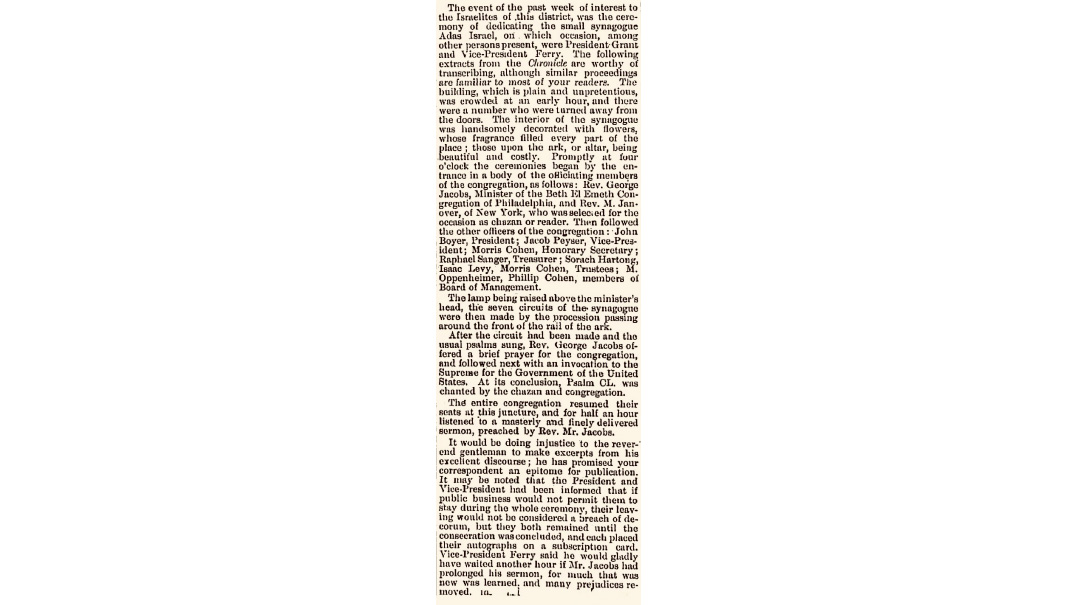Big Gedaliah Bublick
| June 20, 2023Who was this editor in chief of Yiddishe Tageblatt?

Title: Big Gedaliah Bublick
Location: New York City
Document: New York Times
Time: 1948
Harvard or Volozhin? Our Yiddishe Torah, for which generations of Jews have happily given their lives, has been exchanged in this country for the culture of our neighbors… We’re supposed to go to shul and proudly recite the brachah of “asher bachar banu mikal am, venasan lanu Toras emes (Who chose us from all nations and gave His Torah of truth).” However, we believe that the “Torah” of Harvard is greater than the Torah of Volozhin. We’re happy that our children study in Yale and not in Mir Yeshiva.
—Gedaliah Bublick, Min Hameytsar,
New York, 1923
Like the prophets of old, Gedaliah Bublick used his pen to issue a clarion call to the immigrant generation of American Jewry, beseeching them to invest in education, maintain their tradition, and beware the dangers of assimilation. Who was this editor in chief of Yiddishe Tageblatt? And how did he emerge as a leading advocate for Orthodoxy, while vociferously opposing acculturation and watered-down versions of Judaism across the American landscape?
Born in Grodno in 1875 and raised in Bialystok, Gedaliah Bublick studied in the Lomza and Mir yeshivos before drifting away from Torah observance, as was common for the youth of his day. Following stints in Paris and Argentina, in 1904 he immigrated to the United States, where he embarked on a career in journalism. As an astute observer of “huddled masses” attempting to fit in, he soon concluded that millions of Jewish immigrant children were staring into the abyss of losing their Jewish identity.
Bublick personally returned to Torah observance and began wielding his pen to call for changes in general approach to Yiddishkeit on American shores. Decades ahead of his time, he warned of the dangers of diluted religious observance like that found in the nascent Conservative movement (still nominally Orthodox during the 1920s), and predicted mass intermarriage across wide swaths of American Jewry in coming decades.
His articles were blunt but also stirring. Cautiously optimistic of a future for Torah Jewry in America, he encouraged and supported early Orthodox efforts like those of Irving Bunim (whose son, Rabbi Amos Bunim, would later marry Bublick’s granddaughter) and Young Israel. On the pages of Yiddshe Tageblatt, he took on American Jewry’s greatest titans when he felt that they embraced views antithetical to Torah values.
One such instance involved the great philanthropist Jacob Schiff, who opined in the New York Times that European Jewish immigrants were responsible for the recent spike in anti-Semitism due to their refusal to acculturate. Despite the fact that scores of institutions across the Jewish world were beneficiaries of Schiff’s philanthropic largesse, Bublick didn’t hesitate to challenge him on the front page of Yiddishe Tageblatt, referring to him as a “kateigor,” accuser. He almost got fired but he persevered.
On another occasion, Bublick attacked the Reform leader Stephen Wise for statements that the latter had made that Bublick felt demanded protest. The tireless fighter on behalf of American Orthodoxy and against the tides of assimilation passed away in 1948 while attending a convention of the Agudath Harabonim.
Gaucho Gedaliah
For three years at the turn of the century, Gedaliah Bublick lived in Argentina working for the Jewish Colonisation Association (JCA). Through this enterprise, the French Jewish philanthropist Baron Maurice de Hirsch established agricultural colonies in Palestine, the United States, and Canada, with its greatest successes in Argentina. Over 150,000 Jews immigrated to Argentina during the Great Immigration, and many initially settled in all-Jewish farming communes. In 1900 Bublick moved to Paris where he helped a group of emigrants from his native Bialystok move to an Argentinian farming colony. Bublick then served as the Hebrew teacher for the neighborhood children upon their arrival in Argentina.
Turning the Tageblatt
While the Tageblatt turned toward Orthodoxy when Bublick became its editor-in-chief in 1915, his activism took shape in numerous arenas. During the 1917 New York City mayoral campaign, socialist candidate Morris Hillquit received significant support among Jewish immigrant communities, along with an endorsement from the socialist Forverts. Bublick feared that an alignment with a socialist candidate would lead to “many in the general population viewing Yiddish quarters as hubs of wild shouters who resemble Bolsheviks more than Americans.” Bublick warned that support of Hillquit might provoke an anti-Semitic backlash and their loyalty to America would be questioned. He even solicited former president Theodore Roosevelt to write an editorial supporting his assertion. The campaign seemed successful, as predominantly Jewish neighborhoods such as the Lower East Side didn’t vote for the Socialist candidate in greater numbers than the general population. Democratic candidate John F. Hylan won the election by a substantial margin.
(Originally featured in Mishpacha, Issue 966)
Oops! We could not locate your form.







